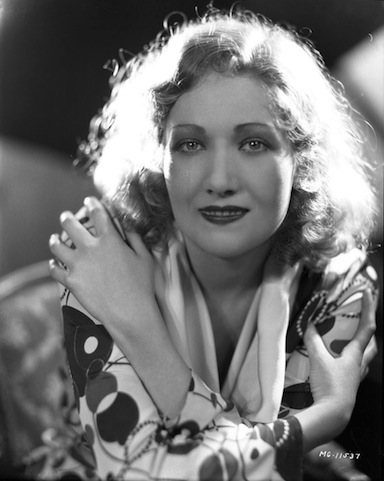Edwina Booth
Josephine Constance Woodruff, also known by her film name, Edwina Booth, was an American actress best known for her appearance as the white goddess in Trader Horn, which was nominated for an Academy Award. She was a member of The Church of Jesus Christ of Latter-day Saints.
She was born on September 13, 1904, in Provo, Utah. She suffered from hypoglycemia as a child and consequently spent much time at home and was unable to complete each year of school. In 1918, her father, Dr. James Lloyd Woodruff, contracted influenza and moved to Venice, California, to recuperate. His wife and children joined him in 1921 and the family hoped that Edwina would benefit from the California climate. She spent much of her time watching movies. She was sunbathing on a California beach when director E. J. Babille noticed her and invited her to come to Hollywood for a screen test. A few days later she appeared at the Metropolitan Studio and the screen test found her “photogenic, exciting” and with a “stage presence.” She changed her name to Edwina, after her favorite grand uncle Edwin, and Booth, after her maternal grandfather John Edge Booth.
Edwina got her first part in a silent movie. Other parts came, but she often turned them down because of the producer’s or director’s intention to seduce her. When a movie producer asked her to spend the weekend with him at a mountain cabin, she told him that she would love to come and added, “I’ll bring my mother and you bring your wife.” She refused to bend her standards to the standards of Hollywood, but managed to be cast in a few other supporting roles.
Her life took an unexpected turn when she was cast in a leading role in the early talkie movie Trader Horn, which was to be filmed in Africa. Although she was frightened to go to Africa, she knew it would be a chance of a lifetime and that the role would lead to stardom for her. She received a series of inoculations against typhoid fever and other diseases but left for Africa with a fever of 104 degrees. For her role, she was clad in a costume made of monkey fur and lion’s teeth. She suffered unbearable heat, sunstroke, insects, and elephant grass that cut her bare feet and legs. She contracted malaria and dysentery, and fell out of a tree. She was also bitten by a tse tse fly, the transmitter of African sleeping sickness. But she finished the film and returned to the United States. The film received a nomination for an Academy Award for Best Picture, but Edwina’s health was changed. She completed three more films—'The Vanishing Legion, Trapped in Tijuana, and Last of the Mohicans—before she collapsed. She sued MGM for not providing adequate clothing or protection. She eventually settled out of court for an undisclosed amount, but Brigham Young University archives reveal the amount was $35,000. She and her father traveled to Europe where she was treated at a tropical disease treatment center, but doctors believed that her career was over and her health compromised.
When they returned to the United States in 1936, Edwina confined herself to a dark room and her family cared for her the rest of her life. In her moments of better health, she was an ordinance worker in the Los Angeles California Temple. She also married three times: her first marriage was annulled soon after she returned from Africa. Her second marriage lasted from 1951 until his death in 1957; her third from 1959 until his death in 1983. She had no children.
There were many false reports of her death, including from Katherine Hepburn, who starred in The African Queen, reporting Edwina’s death in both her memoir of the making of the movie and an interview on television. Edwina died on May 18, 1991.
External Sources
Susan Easton Black and Mary Jane Woodger, Women of Character (American Fork, Utah: Covenant, 2011)
